Environment
Health hazard haunts Shimla city as garbage collection heads towards total collapse
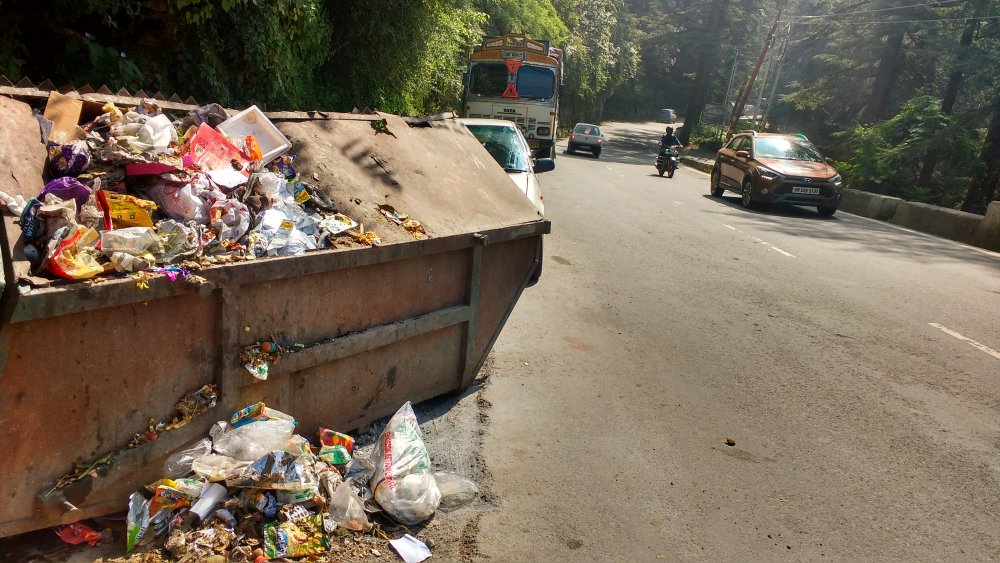
Then-Mayor, Sanjay Chauhan, had criticised the sanitation workers for their demand of hike saying they were being paid maximum wages as compared to entire India. Surprisingly, now he supported the striking workers and said the MC should accept their demands.
Shimla: The Shimla Municipal Corporation has issued a notice warming the striking workers of the Shimla Environment, Heritage and Beautification (SHEB) Society to resume the work by Sept 21.
Otherwise, it cautioned the workers, the door-to-door garbage collection work will be outsourced. A proposal regarding the same was floating in the MC House recently. The decision was taken in a meeting of governing body held on September 19.
On the other hand, the workers said they will prefer mass resignation than ending the strike. President of the SHEB Society, Jaswant Singh, warned the drivers who are still collecting garbage from collection points will also join the strike from Thursday.
Shimla MC hardly has any backup plan to deal with such a situation, which can worsen the sanitation situation of Shimla. It would imply that no garbage would be collected even from collection points.
This situation could lead to sanitation crisis and health hazards related to poor sanitation.
The residents were hopeful that the sanitation workers would end their strike after the seventh annual general meeting (AGM) of the Society on September 18. The Urban Development Minister, Sudhir Sharma, had presided over AGM after the civic body had said he would take the final call over the demands of the striking workers.
The minister gave nod to only 10 percent hike with an assurance that a proposal for a policy recommending 10 percent annual hike in wages will be sent to the government for an approval.
The civic body had expressed its inability to hike their wages due to financial crunch. SMC said it is earning much less than it is spending on SHEB Society.
However, the workers continued their strike as the AGM failed to satisfy them to resume work.
What do SHEB Workers Want?
After seven years of formation of SHEB Society and implementation of door-to-door garbage collection service, the capital city is still struggling with management of solid waste. Though Shimla city did not remain free from littering, the service had proved beneficial in waste management.
The workers are on strike again and the public is feeling free to burn or throw their garbage in forests or in nullahs. The garbage is scattered on roadsides raising a stink. People are not convenient in carrying their garbage daily to collection points.
Unfortunately, as the MC had declared the city as ‘dumper free’ and removed most of the dumpers claiming the door-to-door service was working at 100 percent efficiency, and that there was no need of dumpers.
After a while, the SMC had to place dumpers at some places, and as the current circumstances suggest, MC might need to bring the “dumper method” back.
People, from one locality or other, always complained irregularity in the working of the SHEB Society workers.
However, since 2015, SHEB workers have gone on strike several times over their demands regarding regularization under Shimla Municipal Corporation, as promised to them. The SHEB workers also demanded the corporation to provide them information regarding the recruitment, ESI, Employee Provident Fund accounts etc.
The SHEB Society had alleged then Mayor of Shimla, Sanjay Chauhan, and Deputy Mayor, Tikender Singh Panwar, of harassing the workers by not regularizing them under the MC.
In 2010, a door-to-door garbage collector was receiving Rs. 3300 as monthly salary. In 2015, the salary was increased to 7,700. With this hike in their wages went up the cost of service for the residents and clients who fall under 20 categories like dhabas, tea stalls, hotels, restaurants etc. These charges were between Rs 50 to Rs 1,000 per month depending upon the category.
These allegations were rubbished by then-Deputy Mayor. He had explained that the workers do not understand that only state government is eligible for taking such decisions.
SHEB workers had also alleged the SMC and the Urban Development Department ignoring their health. They had alleged the civic body did not provide them with gloves, proper carry-bags, raincoats etc. The president of the society said 19 workers have died and several others are suffering from jaundice. However, he said, they have not received any relief from the civic body.
In 2015, the SMC had to issue a warning to the workers to join their duty back or face termination under Essential Services Maintenance Act. Notices were also issued to several workers.
Then-Mayor, Sanjay Chauhan, had criticised the sanitation workers over their strike regarding the merger in the MC as regular employees. He had said the workers were being paid maximum wages as compared to entire India.
He supported the striking workers and said the MC should accept their demands.
In 2017, the workers again went on strike multiple times, which lead to the creation of ugly scene as garbage heaps and littering increased.
This tug-of-war between the civic body and the workers continues in September 2017 too. The workers have locked horns with the SMC over their demands which include a minimum wage of Rs. 10,500 per month.
The workers say they are currently receiving Rs 6,700 per month, which is not sufficient to meet ends.
If the government can increase the salaries of officers and ministers by 50 percent or even 100 percent, why it does not make a 10 percent hike for poor like us who do menial jobs,
said workers in a statement to media.
Waste Management/Segregation Still a Distant Dream
Door-to-door garbage collection service that now covers not only 38,000 residential buildings but also the beneficiaries who fall under 20 categories like dhabas, tea stalls, hotels, restaurants etc. in all 34 wards, is best suited for a hilly region like Shimla.
Majority of houses are not connected to roads in Shimla city, therefore, garbage collection is not possible through vehicles.
The SHEB society was formed in 2010 after the High Court had directed the civic body to make proper policy for collection and segregation of non-biodegradable and bio-degradable garbage at the household level.
Back then, the citizens were given a yellow dustbin for non-biodegradable waste, i.e. plastic, metal, stone etc. and green dustbins for bio-degradable waste, i.e. raw and waste foodstuff, paper etc.
In 2017, waste segregation remains a distant dream as the civic body is not even able to collect garbage. Eventually, now there is a great probability that the door-to-door garbage collection work will be given to a private contractor or some NGO.
Neverthless, till the things come back on track, residents should support the corporation by not taking it for granted to dispose of garbage in forests or nulluhas or burn it to pollute air because door-to-door garbage collectors are on strike. To keep your own city clean and prevent the health hazards, try to carry the garbage to the collection points to make it easier for the corporation to transport it through vehicles.
If it is not picked up from these collection points, then there is every reason to criticise the civic body.
Here is the list of ward-wise list of contact numbers of the Nodal Officers appointed by the MC to look after the removal of garbage from various collection points:
Ward Mobile Number
Bharari 8679773967
Ruldbhatta 9418233114
Kaithu 9816588002
Annadel 9459148055
Summerhill 9459153459
Totu 9419090195
Majhyath 9418376919
Boileauganj 9817151277
Kachhi Ghati 9459743003
Tutikandi 9418344254
Nabha 9318727372
Fagali 9418627780
Krishna Nagar 8894126752
Ram Bazaar 9418029908
Lower Bazaar 9418014593
Jakhu 888810728
Benmore 9459753722
Engine Ghar 9418016782
Sanjauli Chowk 9817222688
Upper Dhalli 9418064474
Lower Dhali 9418608263
Shanit Vihar 9418038021
Bhattakuffar 9418044534
Sangti 9418780891
Malyana 9418458702
Panthaghati 9418474747
Kasumpti 8679637396
Chotta Shimla 9418092015
Vikasnagar 9418090790
Patiyog (पटियोग )9816316754
New Shimla 9418062620
Khalini 9418486558
Kanlog 9816035624
x
Environment
Himachal’s Snow Covered Area Has Decreased, Poses Big Threat to State Economy’s Lifelines: Report

Shimla-The area under snow cover in Himachal Pradesh has declined by 18.5% according to a recent report published by State Centre on Climate Change (SCCC) and Space Application Center (ISRO) Ahmedabad. The report revealed this decreasing trend for the five major river basins in the State.
As the report points out, the high altitude regions of Himachal Pradesh receive precipitation mainly in the form of snow during the winter season. One-third of the geographical area of the state is covered by a thick blanket of snow during the winter season. Rivers like Chenab, Beas, Parvati, Baspa, Spiti, Ravi, Sutlej and its tributaries flowing through Himachal are dependent on snowfall in winter. These rivers mainly feed into the Indus water system and a decline at this rate rings a death knell for water and also food security for millions of people from Himachal to Kashmir, the plains of Punjab, the food bowl of the country.
Using images and data received from satellites, the report states, that the winter precipitation was mapped in all the basins from October 2020 to May 2021 (a period of two years). The findings indicate that there has been an average decrease of 8.92 percent in Chenab basin, 18.54 percent in Beas basin, 23.16 percent in Ravi basin, 23.49 percent in Sutlej basin compared to last year. The ice covered area of Chenab basin was 7154.11 sq km in 2019-20, which has come down to 6515.91 sq km in 2020-21. Similarly, Beas basin was reduced from 2457.68 to 2002.03 square kilometer, Ravi basin from 2108.13 square kilometer to 1619.82 square kilometer and Sutlej from 11823.1 square kilometer to 9045 square kilometers. Overall, the snow covered area was reduced from 23542 square kilometer to 19183 square kilometer in the entire Himachal.
Sutlej Basin covers 45 per cent of the total geographical area of Himachal and it is the longest river of the state. It flows for around 320 kms here, passing through Lahaul and Spiti, Kinnaur, Shimla, Kullu, Mandi, Solan and Bilaspur districts, along its course. The above study shows that the maximum reduction in snow cover has occurred in the Sutlej basin. An area of 4359 square kilometers under snow cover has decreased for the whole state, of which more than half of the Sutlej Basin.
Just two years ago another study had indicated that more than half of glaciers in Sutlej Basin are set to vanish by 2050. Yet another study also showed that the Sutlej basin has the highest 562 number of glacial lakes. These lakes stand the risk of sudden outbursts, which then causes flash floods downstream as the valley has already experienced. So, while the crisis that is unfolding, be it deglaciation, lake formation or reduction in area under snow cover, it seems that the Sutlej river basin is more vulnerable to these changes.
Prakash Bhandari, an environmental researcher and activist and member of Himdhara Collective expressing his concern states that the situation in the Sutlej river basin is certainly indicative of a serious climate emergency and it is critical to look into the drivers of this both local and global.
“The Sutlej basin catchment is the largest and so the changes visible here are more significant. Many factors have worked together to create this crisis which should be studied closely. There is no doubt that global warming is contributing to these changes. But the local conditions also play a role in reducing or increasing its impact”, he says.
The upper reaches of the Sutlej Valley, especially areas like Kinnaur are geologically fragile, with sharp gradients and loose soil strata. Vegetation is in a very small area so the proneness to erosion. We have seen the catastrophic impacts of flashfloods and landslides over the last decade and a half, where crores worth of property has been damaged. This year saw a spate of landslides where lives were lost. “In such a sensitive and also strategically important area, changes in the landscape will have far reaching and irreversible impacts. More construction activities will lead to more deforestation, more erosion”.
Construction of dams has been rampant in the Sutlej valley, a phenomena that started post independence and continues today. If all of the planned dams are built the Sutlej will be cho-a-cloc with more then 150, large and small projects. At the bottom of the valley in Bilaspur is the Bhakra Dam, built almost 6 decades ago, which has a size of 168 sq km and a storage capacity of 9.340 cubic km. Is. This is followed by the Kol Dam which extends for 42 km up to Sunni, which has a total storage capacity of 90 million cubic metres. Nathpa Jhakri Project which is 27.394 kms. is long. When a dam is built, a huge amount of water is stored. The debris of many villages, trees etc. also gets absorbed inside the dam. When water is stagnant, it receives heat from the Sun to form mist in the surrounding area by evaporation and simultaneously generates methane gas. The experience of the lake formed by the Kol dam at Tattapani in Mandi district shows that the area is experiencing heavy haze which was not there earlier.
“In the 30s and 40s, Shikari Devi and Kamrunag used to have snow on the peaks for about 6 months, which now could barely stop for only 2 months. The air route distance of Shikari Devi and Kamrunag is only 26 to 30 kms from Tattapani lake. At the same time, their distance is not much from the cement factories of Darlaghat, Sundernagar”, the elders in the area say. “Today, fog is prevalent and this has also made the area warmer”.
Due to the warming of the weather due to the clouds formed from the mist, the snow has started melting quickly. Apart from this the local crop patterns are affected. Post the 1990s, the Sutlej became a site for run of the river hydroelectric projects using extensive underground tunneling. This involves massive use of explosives for blasting through the mountains. Of the 23,000 MW worth of projects to be constructed in Himachal more than 10,000, a third are from this valley alone. Kinnaur continues to be a hydel powerhouse with 10 run of the river projects in progress and 30 more to be set up including two mega projects of 1500 MW and 1000 MW each. This paints a scary picture.
Interactive Sutlej River-Basin Map indicate Hydropower Station location
It is not just the hydro-electric dams but unplanned tourism and other development activities like mining, cement plants, road expansion and mindless construction across the high Himalayan regions have also add to the shift in local weather patterns, land use changes and thus the ecological crisis. But the reason why we should put the limelight on hydropower is that this is being pushed as “Green Energy”, in the name of climate change mitigation. As opposed to other forms of generating power, hydropower projects are said to cause lesser carbon emissions, which is why there has been a global push to shift to renewable resources. But the climate emergency in the Himalayas has put a question mark on ‘water’ as a renewable resource.
The question then arises that with all this data indicating a steady decline in river discharge and snow cover have our planners and policy makers not considered what will happen to these projects? Will they be able to generate the power they propose to? The people of Himalaya have to wake up to this wastage of public resources. Scarce funds should be diverted to better planning for securing local livelihoods by protecting the forest ecosystems and water sources for the future.
Author: Gagandeep Singh-From Himdhara (Environment Research and Action Collective)
Feature Images: unsplash/@raimondklavins
Environment
Chemical Waste Allegedly Poisons Ground Water in Solan Village, Killing Cattle and Causing Diseases in Villagers
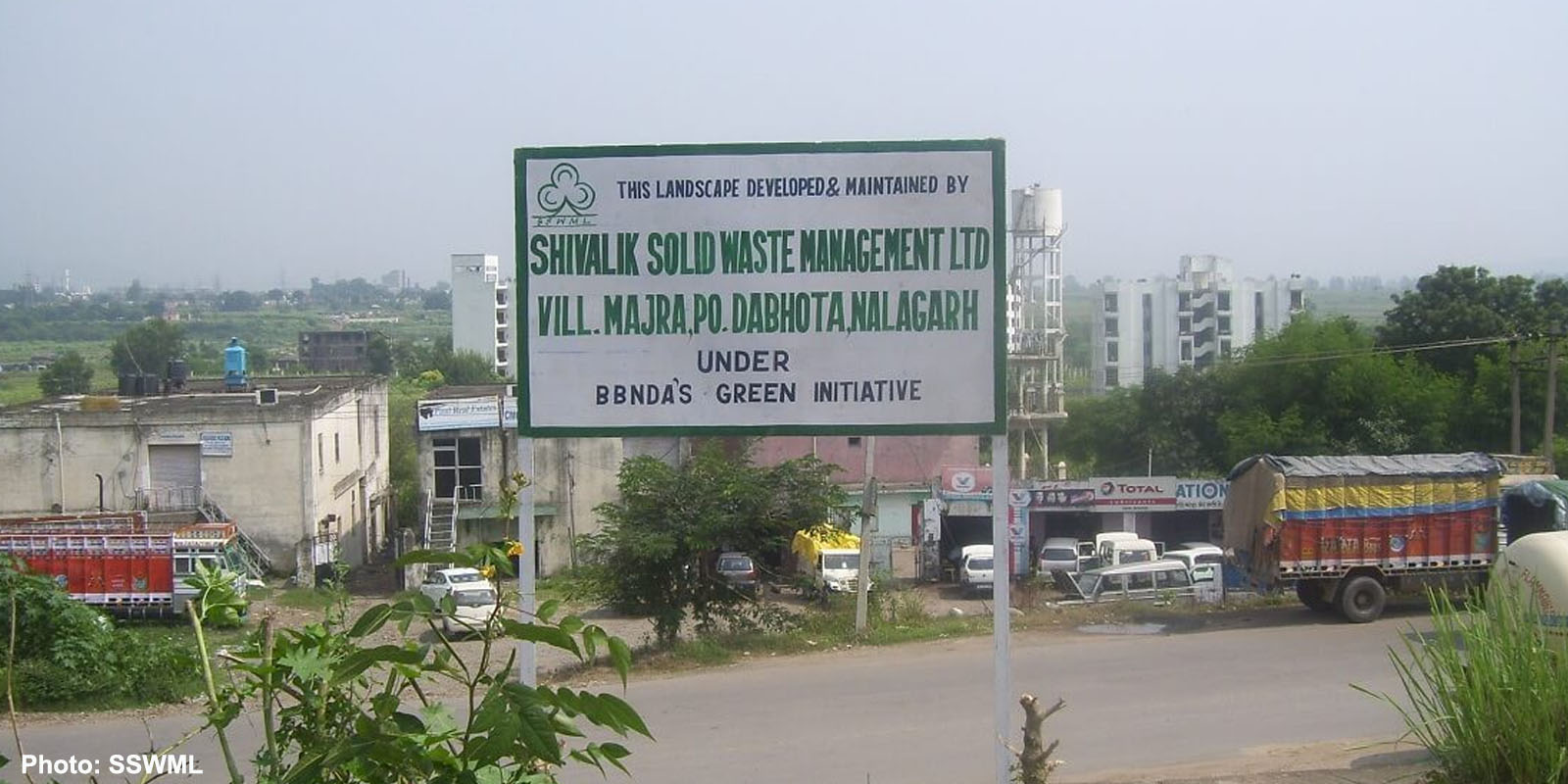
Solan- The Shivalik Solid Waste Management Plant was set up at Village, Majra, Nalagarh, in District Solan 15 years ago. A no-objection certificate (NOC) was obtained from the Panchayat by telling it that it was an environment project. But, later, the villagers found that they were misled for obtaining this NOC. Only when this Plant was built, the villagers came to know that hazardous chemical solid toxic waste of the different factories of Himachal Pradesh was to be brought to this Solid Waste plant and that it was responsible for treating this solid waste.
When the cattle allegedly started dying and villagers fell ill due to various diseases, the villagers came to know that the Plant had contaminated the groundwater by dumping the waste into the ground instead of treating it.
A villager, Joginder Singh, Village Majra, alleged that villagers made many complaints to Pollution Control Board, as well as, various other higher authorities but till date, no action was been taken against the company.
He alleged that due to this poisonous water, their cattle have died and even the villagers have fallen victim to many serious diseases.
Eventually, Singh wrote a letter to the Chief Justice of the Himachal Pradesh High Court, in which it alleged that for the last 15 years, the aforesaid Plant was dumping the solid waste in the ground by covering it with soil, without proper treatment. Over time, the water of natural sources, wells and bore-wells of Panchayat Mazra and the surrounding villages became poisonous due to seepage of chemically contaminated water of this Plant into the ground and resultantly foul smell is emanating from the water.
He urged the Court to pass necessary directions for taking stringent action against the Shivalik solid Waste Management and save the villagers from the hazardous effect of this contaminated water.
A Division Bench comprising Acting Chief Justice Ravi Malimath and Justice Jyotsna Rewal Dua took suo moto cognizance of this letter, making it a Public Interest Litigation.
While hearing this petition, the HP High Court on September 27, 2021, issued a notice to the Chief Secretary, Member Secretary, H.P. State Environment Protection and Pollution Control Board, and the Deputy Commissioner, Solan, in a matter pertaining to the contamination of the water of Wells and Bore-Wells of the surrounding areas due to Chemical Waste of Shivalik Solid Waste Management Plant set.
The court posted the matter after two weeks and also directed the respondents to file their replies by the next date.
Environment
After 15 Years of Passing of Forest Rights Act, Implementation in Himachal Still in Doldrums, Jeopardizing Ecological Conservation
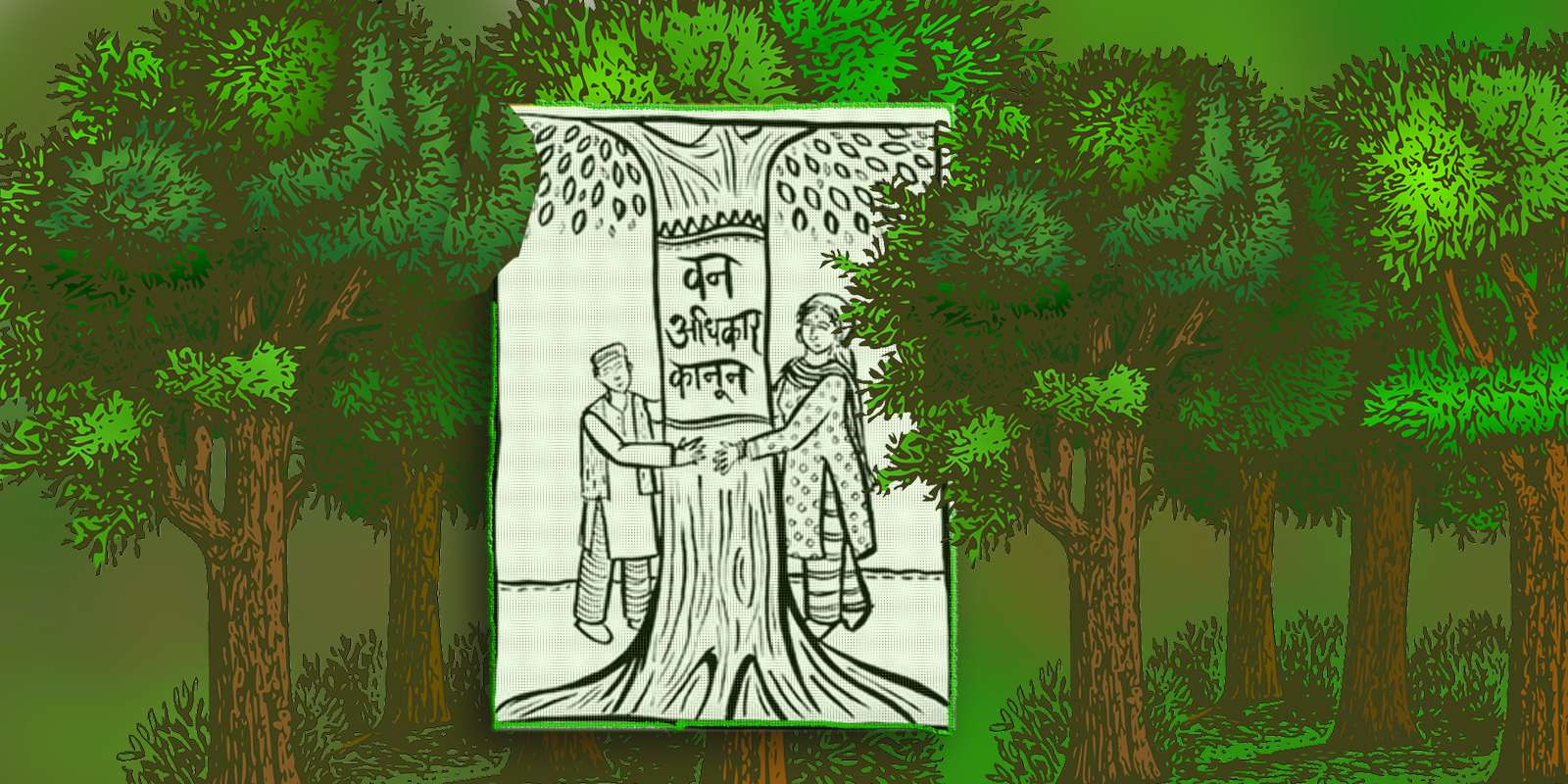
Shimla-‘Planting a tree to celebrate World Environment Day has been reduced to a symbolic tradition. But is this enough for the conservation of our ecology? The efficacy and use of plantation drives are being questioned all across the world today. These drives, especially when conducted by the government tend to be a wastage of resources due to poor survival rates, said environmental and community groups in Himachal Pradesh in a joint statement released recently on World Environment Day.
Further, trees are just one part of our ecosystem which comprises soil, grasslands, scrubs, wetlands, wildlife and even human beings, the statement said.
In India, especially in the Himalayas communities have co-existed with nature since times immemorial – dependent on it for day-to-day life and livelihoods, the groups said. Because of this connection between forests and local livelihoods and culture-communities across the landscape fought to protect the ecosystems they inhabit from destruction – be it the Chipko movement in Uttarakhand 50 years ago or the recent struggles in the tribal district of Kinnaur to highlight the ill-effects of dams and hydropower projects – indigenous and forest-dependent people have protected forest resources, they said.
“It is unfortunate then that these historical custodians of forests were labelled ‘encroachers’ and ‘thieves’ as their livelihoods were displaced from forests sometimes to build dams, highways and cities and at other times in the name of conservation were restricted from using the forests citing forest laws,” the statement said.
The groups said this has happened in Himachal too, where communities like pastoralists and farmers are slowly getting alienated from the forests. This jeopardizes their capacity to protect the forests too – whether from natural calamities like fires or indiscriminate felling.
Forest revival and afforestation programs, it is understood the world over, are only successful when local communities are made in charge and are given full access to use the forest and make decisions about its management.
“We have examples of community forest management like Gramya Jungles of Orissa and Van Panchayats of Uttarakhand. This became part of the Forest Policy in 1988 which is why programs like Joint Forest Management were planned for participatory governance of forests. However, in these too the forest department retained their control and communities were used as labour to plant trees,” the groups highlighted.
Based on these experiences and the repeated evictions of forest-dependent people from their rightful use it became apparent that there was a need for a law that recognised the community’s right to both use and protect/ govern the forest, they said.
It was after years of struggle that the Forest Rights Act 2006 was passed by the parliament of India. The Act recognises individual and community rights over any kind of forest lands for those dependent on these for their bonafide livelihood needs before 13th December 2005. The act also recognises development rights and community management rights. Himachal, where 2/3rd of the landscape is legally classified as ‘forest’ – there is a tremendous need and potential to implement this law to secure the land and livelihood rights of people on forest lands be they for fuelwood, fodder, pastures as well as farming and shelter.
The statement said today it has been 15 years since the passing of FRA but in Himachal, its implementation is in the doldrums.
“While 20 lakh forest rights claims have been accepted all across the country in Himachal only 164 claims have been recognised whereas 2700 are pending with the administration at various levels. The key reasons for the poor implementation include – lack of political will, misinformation about the act amongst the line officials, distrust of the people leading to non-filing of claims and inadequate awareness amongst common people,” the statement said.
It further said that, ironically, the state government has shown great enthusiasm in using this act to grant forest land for village development activities, the rest of the rights namely individual and community forest use and management rights are languishing due to state negligence and actively blocking the granting of these rights.
The groups further highlighted that in the last 5 years, community voices from Kangra, Chamba, Kinnaur, Lahaul-Spiti, Sirmaur and Mandi have been raising the demand for the implementation of this law in the state. It was after this that the state government was forced to announce that it would implement the Forest Rights Act in a mission mode in the state in 2018. The tribal department also worked on training and making educational material on the act. However, these are yet to be properly distributed at the village level.
The joint statement further added that in March 2020 post the pandemic led lockdown the FRA implementation process received a setback. Even as gram sabha meetings and FRC processes came to a grinding halt the economy too got hit. During this time, it became evident more than ever that it is the land and forest-based livelihoods that are available to rural communities to fall back on for survival.
“Whereas the Government should be focused on strengthening land and nature-based livelihoods for the local communities. However, the focus of the state remains on pushing destructive commercial ventures in ecologically fragile areas and valuable farmlands of the state,” the groups said.
The coronavirus has taught the world what the climate crisis had already indicated – that we will continue to be victims of such crisis as long as the ecological destruction continues unabated, the statement said.
“This calls for a change in the model of ‘development’ which prioritises the basic needs and services rather than run blindly after economic growth which is meant to profit companies and contractors”, the groups said.
The statement also said that it is the communities who will now have to believe in their own capacity to manage lives and resources and also call the government to account if our natural resources have to be protected for future generations.
Signatories
- Ajay Kumar, Sanjay Kumar, Advocate Dinesh, Bhoomiheen Bhoomi Adhikar Manch, Himachal
- Birbal Chaurhan, Shamlat Sangharsh Samiti, Sirmaur
- Gulab Singh and Dhaniram Shamra, Sirmaur Van Adhikar Manch
- Joginder Walia Balh Ghaati Kisaan Sangharsh Samiti, Mandi
- Jiya Negi, Van Adhikar Samiti, Kinnaur
- Kulbhushan Upmanyu, Himalaya Bachao Samiti, Chamba
- Lal Hussain, Ghumantu Pashupalak Mahasabha, Chamba
- Meera Devi, Nekram,Shyam Singh Chauhan, Paryavaran evam Gram Vikas Samiti, Karsog, Mandi
- Himshi Singh and Prakash Bhandari, Himdhara Environment Research and Action Collective
- Prem Katoch and Kesang Thakur, Save Lahaul Spiti, Lahaul
- Tenzin Takpa and Sonam Targey, Spiti Civil Society, Spiti
Image by OpenClipart-Vectors from Pixabay


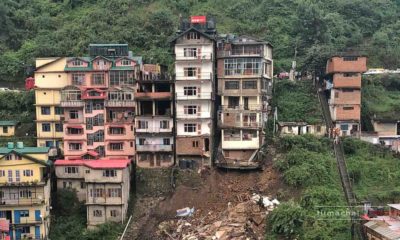



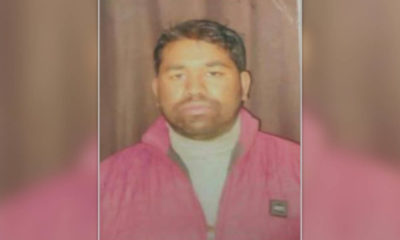








 Home Decor Ideas 2020
Home Decor Ideas 2020
